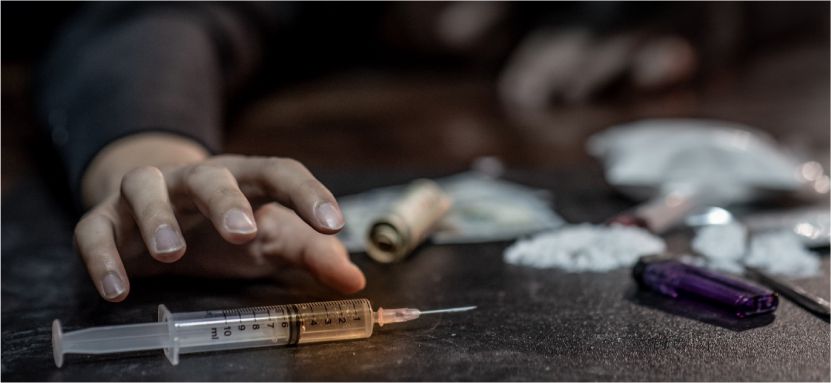
Factors that Predispose Individual to Substance
By ONYEMAOBI CHIOMA UGOCHI
LIFE OVER DRUGS
Physical addiction appears to occur when repeated use of a drug changes the way an individual’s brain feels pleasure. The addicting drug causes physical changes to some nerve cells (neurons) in the brain. Neurons use chemicals called neurotransmitters to communicate. These changes can remain long after the individual stops using the drug.
Drug addiction is a complex disease that has serious, harmful effects on a person’s health and his or her social relationships. How does a person become addicted to drugs? The answer is not so simple—no single factor determines whether a person will become addicted to drugs. Drug addiction is defined as a treatable brain disease that makes it difficult to resist drug use. The risk factors that contribute to addiction are biological or environmental, or many different combinations of both types of factors.
Research shows that drug abuse usually begins in adolescence. Thereare several reasons for this- for one, the parts of the brain that controls judgment, self-control, and future planning does not fully mature until young adulthood. As a result, the teen brain is wired for risk-taking and experimenting. Trying new things is part of the process of maturing and developing the brain’s ability to evaluate risk and make decisions. Another important reason why drug use frequently begins in adolescence is that teens are often strongly influenced by their peers, who may convince them that “everybody’s doing it”. The good news is that teens can control factors that put them at risk of engaging in harmful behaviors, such as drug abuse.
Factors That Predispose Individuals To Substances
1. GENETICS / BIOLOGICAL FACTORS
Addiction isn’t a matter of weak willpower or lack of morals. The chemical reactions that happen in an individual’s brain when they have an addiction are quite different than those that happen in someone without one. That explains why one person may be able to smoke cigarettes for pleasure, while another needs them daily to function.
Heredity is a major risk factor for addiction. According to the National Institute on Drug Abuse Trusted Source, up to half of an individual’s risk of addiction to alcohol, nicotine, or other drugs is based on genetics. If an individual has a family member who has experienced addiction, he/she is more likely to experience it too.
If one has an “addictive personality,” he/she may be at risk of a wide range of addictions. For example, if one has an alcoholic parent, he/she might choose not to drink but still become addicted to smoking or gambling.
Physical addiction appears to occur when repeated use of a drug changes the way an individual’s brain feels pleasure. The addicting drug causes physical changes to some nerve cells (neurons) in the brain. Neurons use chemicals called neurotransmitters to communicate. These changes can remain long after the individual stops using the drug.
2. ENVIRONMENTAL,PSYCHOLOGICAL FACTORS
Psychological factors such as death of a loved one, experiencing painful heartbreaks, failure in life, rape or experiencing any other stressful life event could stand as risk factors, in that individuals may begin to use substances to cope with possible disturbing symptoms of anxiety, depression, stress.
Environmental factors can also raise one’s risk of addiction. For children and teens, lack of parental involvement can lead to greater risktaking or experimentation with alcohol and other drugs. Young people who experience abuse or neglect from parents may also use drugs or alcohol to cope with their emotions. Peer pressure is another risk factor for addiction, especially among young people.
Even when it’s not overt or aggressive, pressure from friends to fit in can create an environment of “experimentation” with substances that can lead to addiction. The availability of a substance in one’s social group can also affect one’s risk of becoming addicted. For example, large amounts of alcohol are available in many social settings that are popular among college students. If an individual is trying to recover from an addiction, he/she may need to avoid environmental triggers, including some activities, settings, or people. For example, one may need to avoid the people that they previously used drugs with. An individual may experience cravings in certain social circles and situations, raising their risk of relapse. This might be the case even after a long period of sobriety.
3. HEALTH FACTORS
In the medical community, an individual has a “dual diagnosis” if he/she has both an addictive disorder and another mental health condition, such as depression. Underlying mental health issues can increase your risk of addiction. In turn, an addiction can increase the severity of other mental health conditions. This creates a vicious cycle in which one addiction tends to progress quickly and with severe consequences. One may feel like alcohol or drugs decrease their depression symptoms for a short period. But in the long run, addiction will likely make things worse. Other medical conditions can also increase an individual’s risk of addiction. For example, if someone takes prescription pain pills after surgery, they may be at risk of addiction. An injury or illness may also change an individual’s lifestyle in ways that encourage them to use drugs or alcohol as a coping mechanism. A doctor/mental health practitioner can help one develop better strategies to cope with changes in their health and lifestyle.
CONCLUSION
Just because someone is at risk for developing a substance use disorder does not mean they are guaranteed to battle it during their lifetime. Possessing risk factors just means one’s chances of developing a substance use disorder are higher than someone who does not have these risk factors.
However, by intervening early and through preventative measures like therapy and medication, one can work to lower their risk and keep themselves healthy.
It is critical to remember that there is help and hope for anyone who has developed an addiction. With the proper intervention, one can make the changes that will put them on the path to sobriety
